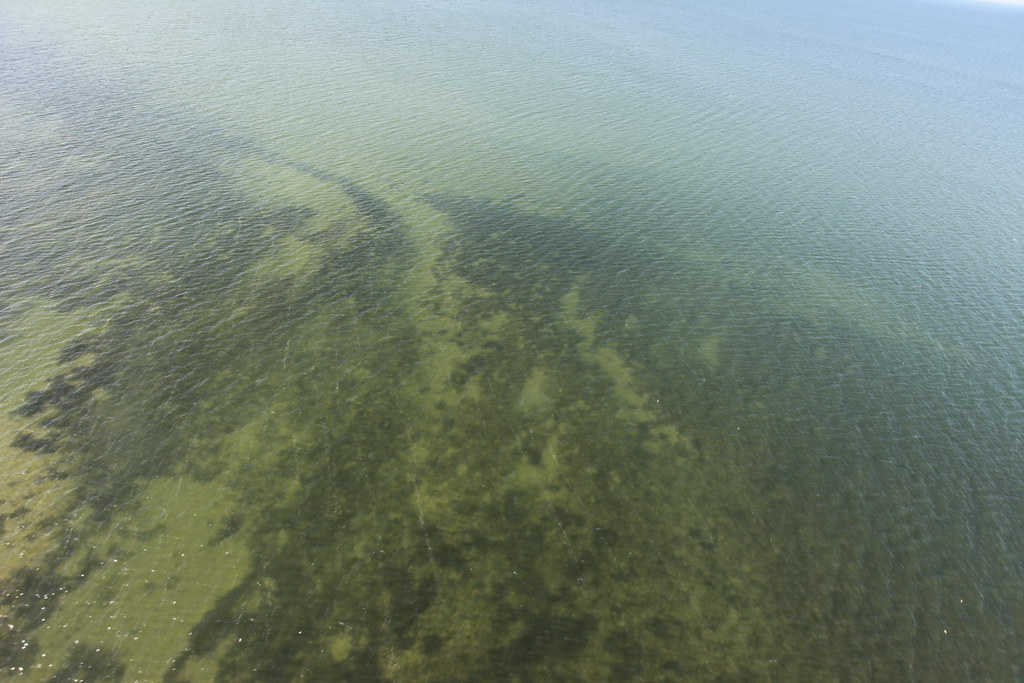
Can Succulents Be Submerged in Water for Extended Periods?

Succulents have become increasingly popular in recent years due to their unique appearance and low maintenance requirements. These plants are known for their ability to store water in their leaves, stems, and roots, making them resilient in arid and dry environments. However, there is often confusion about whether succulents can be submerged in water for extended periods and still survive. We will explore this topic and provide guidance on how to care for succulents when it comes to water exposure.
We will first discuss the natural habitat of succulents and how they have adapted to survive in dry conditions. We will then delve into the topic of submerging succulents in water and examine the potential risks and benefits. Additionally, we will provide some tips on how to properly care for succulents and ensure their long-term health. Whether you are a beginner succulent owner or an experienced gardener, this article will provide valuable insights into the care and maintenance of these beautiful and unique plants.
- No, succulents should not be submerged in water for extended periods
- It is important to avoid overwatering succulents
- Succulents are adapted to dry conditions and prefer well-draining soil
- Watering succulents too frequently can lead to root rot
- It is best to allow the soil to dry out between waterings
- Watering succulents sparingly is key to their health and longevity
- Succulents can survive drought conditions and do not require frequent watering
- Submerging succulents in water can cause their roots to suffocate and rot
- It is recommended to water succulents from the base and allow excess water to drain
- Proper watering practices will help keep succulents thriving
- Frequently Asked Questions
No, succulents should not be submerged in water for extended periods
Succulents are a popular choice among plant enthusiasts due to their unique and fascinating features. They are known for their ability to store water in their leaves, stems, or roots, allowing them to survive in arid conditions. However, despite their water-storing capabilities, succulents should not be submerged in water for extended periods.
Succulents thrive in well-draining soil, which allows excess water to flow out of the pot easily. When submerged in water for too long, their roots become saturated, leading to root rot. Root rot occurs when the roots are deprived of oxygen, creating an environment for harmful bacteria and fungi to thrive.
Excessive water can also cause the succulent's leaves to become mushy and translucent, which is a clear sign of overwatering. Over time, the plant's health will deteriorate, and it may eventually die if the issue is not addressed promptly.
The importance of a watering routine
Establishing a proper watering routine is crucial for the well-being of your succulents. It is essential to strike a balance between providing enough water for the plant's needs and preventing overwatering.
When watering your succulents, it is recommended to thoroughly soak the soil until water starts to drain out from the bottom of the pot. This ensures that the roots receive adequate hydration without being waterlogged.
 Can Succulents Thrive in Potting Soil or Do They Require Special Care?
Can Succulents Thrive in Potting Soil or Do They Require Special Care?A good practice is to wait for the soil to dry out completely before watering again. Succulents prefer to be slightly underwatered rather than overwatered, as they can tolerate short periods of drought but struggle with excessive moisture.
Signs of overwatering and how to remedy the situation
It is crucial to be attentive to the signs of overwatering in your succulents to prevent any further damage. Some common signs include yellowing or wilting leaves, mushy or translucent stems, and an unpleasant smell coming from the soil.
If you notice any of these signs, it is essential to take immediate action. First, remove the succulent from its pot and inspect the roots. Trim off any black or mushy roots with a clean pair of scissors or pruning shears.
Next, allow the plant to dry out completely before replanting it in fresh, well-draining soil. Avoid watering the succulent for a few days to give it a chance to recover and prevent further root rot.
Remember, prevention is always better than cure when it comes to succulent care. By understanding their unique water requirements and establishing a proper watering routine, you can ensure the longevity and health of your beloved succulents.
It is important to avoid overwatering succulents
Succulents are known for their ability to store water in their leaves, stems, and roots, making them drought-tolerant plants. However, this doesn't mean that they can thrive when submerged in water for extended periods. In fact, overwatering is one of the most common mistakes that succulent owners make.
 Find the Best Soil for Your Succulents with Eb Stone
Find the Best Soil for Your Succulents with Eb StoneOverwatering can lead to root rot, a condition where the roots of the plant become damaged or even die due to excessive moisture. When succulents are constantly exposed to waterlogged conditions, their roots are unable to absorb oxygen properly, resulting in suffocation and eventually, the demise of the plant.
While succulents can withstand dry periods, they are not adapted to thrive in waterlogged environments. Therefore, it is crucial to provide them with the right amount of water and drainage to ensure their health and longevity.
So, can succulents be submerged in water for extended periods?
The short answer is no. Succulents are not designed to be fully submerged in water for prolonged periods. They are adapted to arid climates where water is scarce, and their unique physiology allows them to survive in these conditions.
Succulents are native to desert regions where they have evolved to store water in their fleshy leaves, stems, and roots. This adaptation enables them to survive in dry environments by conserving water during periods of drought.
When submerged in water, succulents are unable to regulate the amount of water they absorb, leading to potential damage and stress on their systems. Their leaves may become mushy, discolored, or even fall off. The excessive moisture can also promote the growth of harmful bacteria and fungi, further compromising the health of the plant.
Proper watering for succulents
So, how should you water your succulents? The key is to provide them with a thorough watering, allowing the water to soak into the soil, but then allowing the excess to drain away.
Here are some tips for proper succulent watering:
 The Soak and Dry Method for Succulents: A Comprehensive Guide
The Soak and Dry Method for Succulents: A Comprehensive Guide- Use a well-draining potting mix specifically designed for succulents.
- Water the soil directly, avoiding wetting the leaves and stems.
- Allow the soil to dry out completely between waterings.
- Water deeply but infrequently, ensuring that excess water drains out of the pot.
- Consider factors like temperature, humidity, and the season when adjusting your watering schedule.
Remember, it is better to underwater than to overwater your succulents. These resilient plants have adapted to survive in harsh conditions, and they can tolerate periods of drought much better than excessive moisture.
While succulents are hardy plants that can withstand dry periods, they should not be submerged in water for extended periods. Proper watering techniques, such as providing thorough but infrequent waterings and allowing the soil to dry out between waterings, will help ensure the health and longevity of your succulents.
Succulents are adapted to dry conditions and prefer well-draining soil
Succulents are known for their ability to thrive in dry conditions and their preference for well-draining soil. These plants have adapted to survive in arid environments by storing water in their leaves, stems, and roots. This unique adaptation allows them to withstand drought and periods of limited water availability.
However, this raises the question: Can succulents be submerged in water for extended periods? While succulents are resilient and can tolerate some level of moisture, prolonged exposure to water can be detrimental to their health.
1. Root Rot:
One of the main concerns with submerging succulents in water is the risk of root rot. Succulent roots are adapted to absorb water quickly but also to dry out rapidly. When the roots are constantly exposed to water, they can become waterlogged, leading to root rot. Root rot is a fungal disease that can cause the roots to decay, leading to wilting, discoloration, and eventually, the death of the plant.
 Where to Find Succulent Soil at Home Depot: Your Guide to Buying
Where to Find Succulent Soil at Home Depot: Your Guide to Buying2. Lack of Oxygen:
Succulent roots need access to oxygen to function properly. When submerged in water, the oxygen supply to the roots is limited, which can suffocate the plant's roots. Without sufficient oxygen, the roots may become weak, making the succulent more susceptible to diseases and other environmental stressors.
3. Leaf Damage:
Submerging succulents in water can also lead to leaf damage. Succulent leaves are designed to store water and are covered in a waxy cuticle that helps prevent water loss. When submerged, the cuticle can become damaged, allowing excess water to penetrate the leaves. This can result in leaf discoloration, leaf drop, and an overall decline in the plant's health.
4. Fungal and Bacterial Diseases:
Excessive moisture can create a favorable environment for the growth of fungal and bacterial diseases. Succulents that are constantly submerged are more prone to developing these diseases, which can further weaken the plant's overall health and vitality.
Conclusion:
 Proper Watering Frequency for Repotted Succulents: A Guide
Proper Watering Frequency for Repotted Succulents: A GuideWhile succulents are resilient plants, they are not designed to be submerged in water for extended periods. To ensure the health and longevity of your succulents, it is best to provide them with well-draining soil and water only when the soil is completely dry. Overwatering or submerging succulents can lead to root rot, lack of oxygen, leaf damage, and increased susceptibility to diseases. By understanding the specific needs of succulents, you can create an environment that promotes their optimal growth and well-being.
Watering succulents too frequently can lead to root rot
Watering succulents too frequently can be detrimental to their health and can even lead to root rot. Succulents have adapted to survive in arid environments by storing water in their leaves, stems, and roots. They are able to withstand long periods of drought and thrive in well-draining soil.
When succulents are submerged in water for extended periods, their roots become waterlogged and are unable to absorb oxygen properly. This lack of oxygen can cause the roots to rot, leading to root rot. Root rot is a serious condition that can kill the plant if not addressed promptly.
It is important to understand the watering needs of succulents and to provide them with the appropriate amount of water. While succulents are drought-tolerant, they still require some water to survive. The frequency of watering will depend on various factors such as the type of succulent, the climate, and the potting medium.
When watering succulents, it is crucial to follow the "soak and dry" method. This method involves thoroughly watering the plant until the water drains out of the pot's drainage holes. Allow the soil to dry completely before watering again. This allows the roots to receive sufficient water while also preventing them from sitting in excess moisture for too long.
If you accidentally submerge your succulent in water or notice signs of root rot, it is important to take immediate action. Carefully remove the plant from the water and inspect the roots. Trim away any affected or rotting roots using sterilized tools. Allow the plant to dry out for a few days before repotting it in fresh, well-draining soil.
 Optimal Growth: Can Succulents Thrive in Potting Soil?
Optimal Growth: Can Succulents Thrive in Potting Soil?Remember, succulents are adapted to survive in dry conditions, so it is best to err on the side of underwatering rather than overwatering. By providing them with the right amount of water and avoiding prolonged submersion, you can help your succulents thrive and avoid the risk of root rot.
It is best to allow the soil to dry out between waterings
When it comes to caring for succulents, one of the most important aspects is getting the watering schedule right. Succulents are known for their ability to store water in their leaves, stems, and roots, which allows them to thrive in arid conditions. However, this doesn't mean that they can survive being submerged in water for extended periods of time.
It is best to allow the soil to dry out between waterings. Overwatering is one of the most common mistakes made when caring for succulents. These plants are adapted to survive in dry environments, so too much moisture can lead to root rot and other issues. To ensure the health and longevity of your succulents, it is crucial to let the soil dry out completely before watering again.
Why shouldn't succulents be submerged in water?
Succulents have shallow roots, and they are not equipped to deal with excessive moisture. When succulents are constantly submerged in water, the roots become waterlogged and are unable to absorb oxygen. This lack of oxygen can lead to root rot, a condition that can quickly kill a succulent plant.
Furthermore, succulents are adapted to store water in their leaves and stems, making them more prone to rot if they are constantly in contact with water. The excess moisture can also attract pests, such as fungus gnats, which can further damage the plant.
 The Best Time to Water Your Succulent Plants: A Guide
The Best Time to Water Your Succulent Plants: A GuideHow often should succulents be watered?
The frequency of watering will depend on various factors, such as the climate, the type of succulent, and the growing conditions. As a general rule of thumb, it is recommended to water succulents thoroughly and then allow the soil to dry out completely before watering again.
During the growing season, which is typically spring and summer, succulents may need to be watered every 1-2 weeks. However, during the dormant season, which is usually fall and winter, succulents require less water and may only need to be watered every 3-4 weeks.
Signs of overwatering succulents
It is crucial to pay attention to the signs that your succulents may be receiving too much water. Some common signs of overwatering include:
- Yellowing or wilting leaves
- Soft and mushy stems or roots
- Black or brown spots on the leaves
- Foul smell coming from the soil
If you notice any of these signs, it is important to adjust your watering schedule to prevent further damage to your succulents.
While succulents are known for their water-storing abilities, they should not be submerged in water for extended periods of time. By allowing the soil to dry out between waterings and being mindful of the signs of overwatering, you can ensure the health and longevity of your succulent plants.
 Find the Perfect Succulent Moisture Meter Chart for Your Plants
Find the Perfect Succulent Moisture Meter Chart for Your PlantsWatering succulents sparingly is key to their health and longevity
Succulents are known for their ability to store water in their leaves and stems, making them highly adaptable to dry and arid conditions. One common misconception about succulents is that they can survive by being submerged in water for extended periods. However, this is not the case.
Watering succulents sparingly is key to their health and longevity. While succulents are capable of surviving without water for long periods, they do require some moisture to thrive. Submerging them in water for extended periods can actually lead to root rot and other issues.
So, can succulents be submerged in water at all?
The answer is yes, but only for a short period of time. Some succulents, such as the Echeveria or Sedum varieties, can tolerate brief submersion in water. This can be done as a method to rehydrate the plant or to remove pests, such as spider mites.
How to safely submerge succulents in water:
- Choose the right succulent: Not all succulents can handle being submerged in water. Research the specific species of succulent you have before attempting to submerge it.
- Prepare a container: Fill a container with water, making sure it is deep enough to fully submerge the succulent without damaging its leaves or stems.
- Submerge the succulent: Gently place the succulent in the water, ensuring that it is fully submerged. Allow it to soak for no longer than 10-15 minutes.
- Remove and dry: Carefully remove the succulent from the water and let it dry completely before returning it to its pot or planting location.
It's important to note that submerging succulents in water should be done sparingly and only when necessary. Over-watering can lead to root rot and ultimately, the death of the plant. Succulents are adapted to survive in arid conditions, so they thrive best when their watering needs are met with moderation.
Remember to observe your succulents closely and adjust your watering routine based on their individual needs. It's always better to underwater than to overwater when it comes to succulents.
 Succulent Care: Watering Frequency & Best Practices for Healthy Plants
Succulent Care: Watering Frequency & Best Practices for Healthy PlantsWhile succulents can tolerate being submerged in water for a short period, it is not recommended as a regular watering method. Stick to a proper watering schedule and ensure the soil is allowed to dry out between waterings to keep your succulents happy and healthy.
Succulents can survive drought conditions and do not require frequent watering
Succulents are known for their ability to thrive in dry and arid environments. These plants have adapted to survive drought conditions by storing water in their leaves, stems, and roots. As a result, they do not require frequent watering like other houseplants.
However, this unique characteristic of succulents often leads to confusion regarding their water requirements. Many people wonder if succulents can be submerged in water for extended periods, especially when they are away on vacation or during periods of neglect.
The answer is both yes and no.
While succulents are highly resilient and can tolerate drought, they are not designed to be submerged in water for long periods. Unlike aquatic plants, succulents are not equipped to handle excessive moisture around their roots.
When succulents are submerged in water, their roots can become waterlogged, leading to root rot and ultimately the death of the plant. The excess moisture prevents the roots from receiving oxygen and can cause them to suffocate.
However, there are some succulent species that can tolerate brief periods of submersion. These species have evolved to grow in areas prone to occasional flooding or heavy rainfall. Examples include certain types of sedums, echeverias, and crassulas.
 Cacti and Succulents: Understanding Their Unique Watering Requirements
Cacti and Succulents: Understanding Their Unique Watering RequirementsIf you are considering submerging your succulent in water, it is essential to know the specific needs of the plant you have. Research the species and consult care guides to determine if it can tolerate being submerged.
How to properly water succulents
Instead of submerging your succulents, it is best to follow a proper watering routine that mimics their natural habitat. Here are some guidelines to help you water your succulents effectively:
- Allow the soil to dry out completely between waterings: Succulents prefer dry soil, so it is crucial to let the soil dry out completely before watering again. Stick your finger about an inch into the soil to check for moisture. If it feels dry, it's time to water.
- Water deeply but infrequently: When you do water your succulents, make sure to water deeply until the water drains out from the bottom of the pot. This helps ensure that the roots receive adequate hydration. However, avoid watering too frequently as it can lead to root rot.
- Use well-draining soil: Succulents thrive in well-draining soil that allows excess water to escape. Avoid using regular potting soil, which tends to retain moisture. Instead, opt for a specialized succulent or cactus mix.
- Water from the base: To prevent water from sitting on the leaves and causing rot or fungal issues, it is best to water your succulents from the base. Pour water into the saucer or use the bottom-up watering method to allow the roots to absorb water without exposing the leaves to excess moisture.
By following these watering practices, you can ensure that your succulents receive the right amount of water without risking their health. Remember, it's always better to underwater than overwater when it comes to succulents.
Submerging succulents in water can cause their roots to suffocate and rot
Submerging succulents in water for extended periods of time can have detrimental effects on their overall health and well-being. While succulents are known for their ability to store water in their leaves and stems, they are not designed to withstand being fully submerged in water.
Root suffocation and rot:
One of the main reasons why submerging succulents in water is not recommended is because it can cause their roots to suffocate and eventually rot. Succulents have adapted to thrive in arid environments, where they are accustomed to receiving infrequent but deep watering. Their roots are designed to absorb water quickly during a watering session and then allow the excess water to drain away. When succulents are submerged in water, their roots are unable to access the oxygen they need to survive, leading to root suffocation. As a result, the roots start to decay and rot, which can ultimately lead to the death of the plant.
Disruption of natural growth pattern:
In addition to root suffocation and rot, submerging succulents in water can also disrupt their natural growth pattern. Succulents have evolved to grow in a specific way, with their leaves and stems adapted to store water and withstand periods of drought. When they are constantly submerged in water, their growth pattern is disrupted, and they may develop weak, elongated stems or leaves. This can negatively impact their overall appearance and vigor.
Alternative watering methods:
Instead of submerging succulents in water, it is recommended to use alternative watering methods. The most suitable approach is to water succulents using the "soak and dry" method. This involves thoroughly watering the soil until water runs out of the drainage holes, allowing the excess water to drain away completely. Afterward, you should wait for the soil to dry out before watering again. This method mimics the natural rainfall patterns in arid environments and provides succulents with the necessary moisture without the risk of root suffocation and rot.
Conclusion:
While succulents are hardy plants that can withstand periods of drought, they are not equipped to survive being submerged in water for extended periods. Submerging succulents can lead to root suffocation, rot, and disruption of their natural growth pattern. Therefore, it is crucial to avoid submerging succulents in water and instead opt for alternative watering methods that mimic their natural environment.
It is recommended to water succulents from the base and allow excess water to drain
When it comes to watering succulents, the general rule of thumb is to water them from the base and allow any excess water to drain out. This ensures that the roots receive the necessary moisture while preventing waterlogged conditions that can lead to root rot.
However, there may be instances where you might wonder if it is safe to submerge succulents in water for extended periods. While succulents are known for their ability to tolerate drought and store water in their leaves, they are not adapted to survive in waterlogged conditions for prolonged periods.
Why succulents should not be submerged in water
Succulents have unique adaptations that allow them to thrive in arid environments. Their leaves are fleshy and store water, which enables them to withstand dry spells and survive with minimal watering. However, these adaptations do not equip them to handle excessive moisture.
When succulents are submerged in water for extended periods, their roots can become waterlogged, leading to a lack of oxygen. This can cause root rot, a condition where the roots decay and become susceptible to fungal and bacterial infections.
Additionally, prolonged exposure to water can lead to the deterioration of the succulent's leaves. The excess moisture can cause the leaves to become mushy, discolored, or develop spots, affecting the overall health and appearance of the plant.
How to properly water succulents
To ensure the well-being of your succulents, it is best to follow proper watering practices. Here are some guidelines to keep in mind:
- Water from the base: Rather than pouring water directly onto the leaves, water the soil around the base of the plant. This allows the roots to absorb the moisture without risking excessive water accumulation on the leaves.
- Allow excess water to drain: Succulents prefer well-draining soil. After watering, make sure to empty the saucer or drainage tray to prevent the plant from sitting in standing water.
- Observe the signs: Pay attention to the appearance and behavior of your succulents. If the leaves start to look wrinkled or feel soft, it may be a sign that the plant needs water. However, if the leaves appear swollen or discolored, it could indicate overwatering.
By following these practices, you can provide your succulents with the right amount of water they need to thrive while avoiding the risks associated with waterlogged conditions.
Proper watering practices will help keep succulents thriving
Proper watering practices will help keep succulents thriving
Succulents are known for their ability to store water in their leaves and stems, making them relatively drought-tolerant plants. However, this doesn't mean that they can be submerged in water for extended periods without any consequences. In fact, improper watering is one of the most common reasons why succulents fail to thrive or even die.
So, can succulents be submerged in water for extended periods?
The short answer is no, succulents should not be submerged in water for extended periods. While they can tolerate occasional heavy rain or a thorough watering, leaving them constantly in standing water can lead to root rot and other issues.
The importance of well-draining soil
One of the key factors in preventing overwatering and root rot in succulents is using well-draining soil. Succulents require soil that allows excess water to drain away quickly, preventing the roots from sitting in water for too long. A well-draining soil mix for succulents typically consists of a combination of potting soil, perlite, and coarse sand.
Watering frequency and technique
When it comes to watering succulents, it's important to follow a "soak and dry" method. This means thoroughly watering the soil until water runs out of the drainage holes and then allowing the soil to dry out completely before watering again. The frequency of watering will depend on various factors such as the succulent species, local climate, and season.
It's also worth noting that different succulent species have different water requirements. Some succulents, like cacti, are more drought-tolerant and require less frequent watering, while others may need more regular watering. Understanding the specific needs of your succulents is crucial for their overall health and growth.
Tips for preventing overwatering
- Avoid using pots without drainage holes, as they can trap excess water and lead to root rot.
- Monitor the moisture level of the soil by using a moisture meter or simply sticking your finger into the soil. Only water when the soil is dry.
- Water the soil directly rather than spraying or misting the leaves, as this can increase the risk of fungal diseases.
- During the winter months or dormant period, reduce watering as succulents require less water during this time.
By following these proper watering practices, you can help ensure that your succulents remain healthy and vibrant. Remember, moderation is key when it comes to watering succulents, and it's always better to underwater than to overwater.
Frequently Asked Questions
1. Can Succulents Be Submerged in Water for Extended Periods?
No, succulents should not be submerged in water for extended periods as it can lead to root rot and ultimately kill the plant.
2. How often should I water my succulents?
Succulents have low water needs and should be watered only when the soil is completely dry, usually every 1-2 weeks depending on environmental conditions.
3. What kind of soil is best for succulents?
Succulents require well-draining soil to prevent waterlogged roots. A mix of potting soil, perlite, and coarse sand or pumice is ideal for succulents.
4. Can succulents survive indoors?
Yes, many succulents can thrive indoors as long as they receive adequate sunlight, good air circulation, and are watered correctly.
If you want to read more articles similar to Can Succulents Be Submerged in Water for Extended Periods?, you can visit the Watering and Soil category.






You Must Read